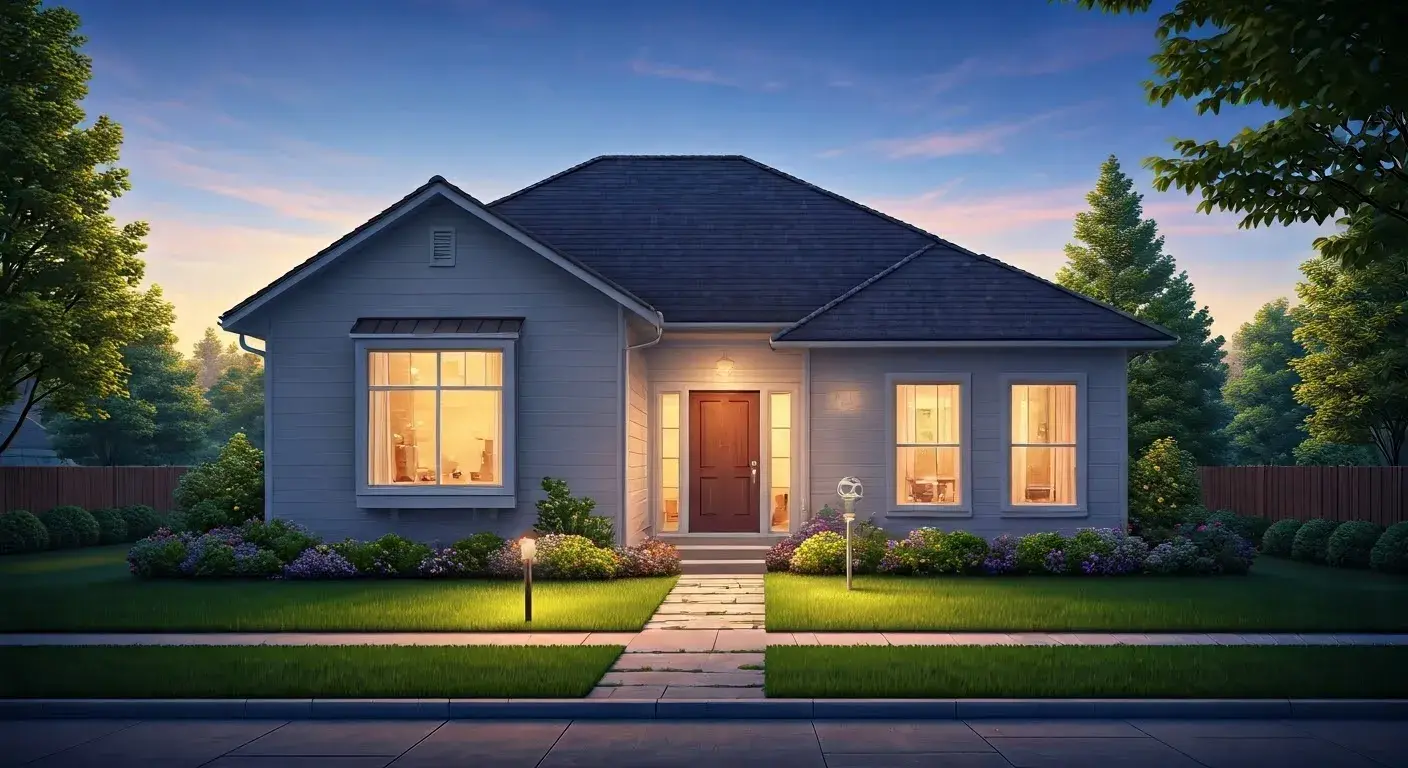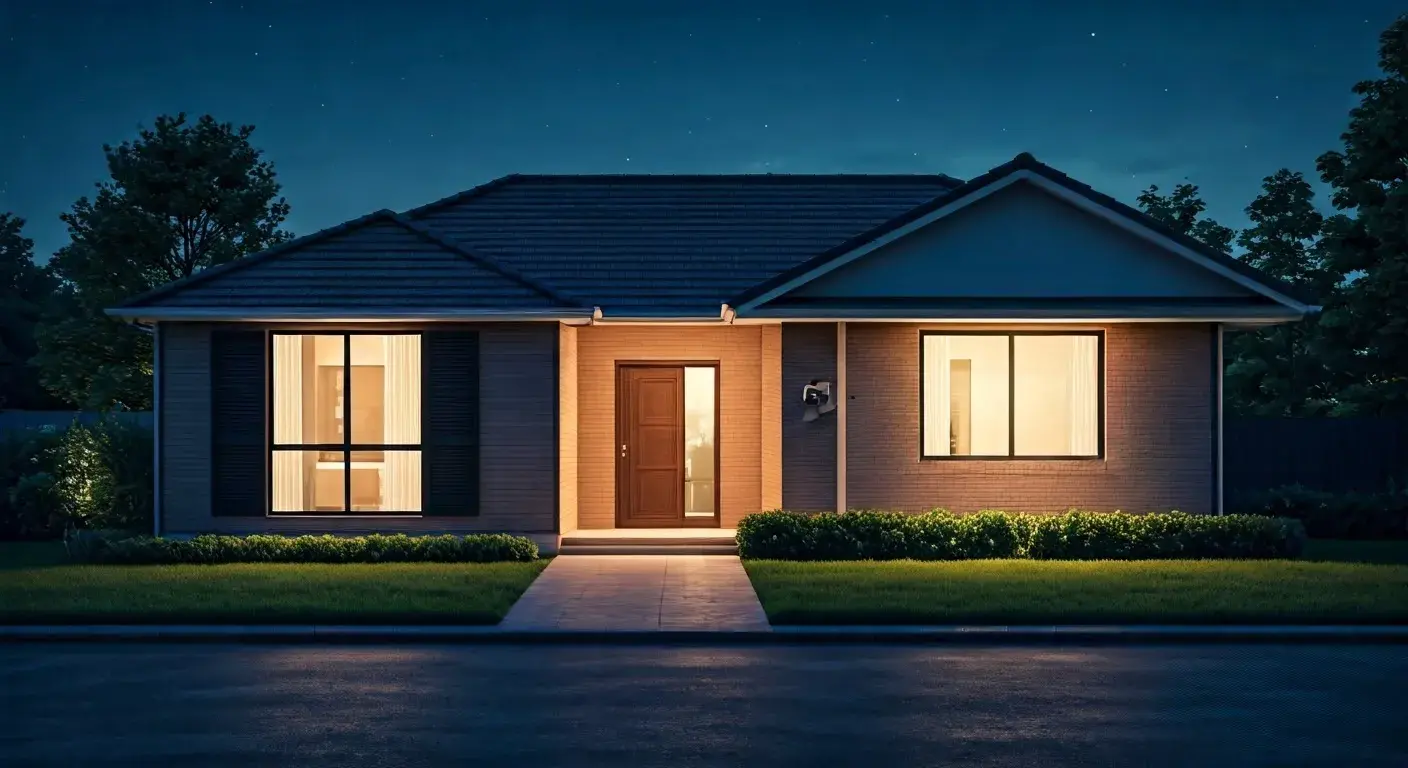In today's world, keeping your home safe is very important. A good home security system can give you great peace of mind. With technology changing fast, homeowners can find many new features and smart home options. If you want simple safety or a full smart home security setup, this blog will show you the best choices for 2024, so you get it right the first time.
Understanding Home Security Systems
Home security systems act like constant guardians. They protect your home and loved ones from possible dangers. These systems usually have a main part called a base station. This base station connects to different sensors placed around your home. These sensors can notice things like movement, door and window openings, and glass breaks, ensuring you are notified in the event of an emergency.
If a sensor finds anything strange, the system reacts quickly. It sets off an alarm, sends alerts to your smartphone, and, based on your monitoring plan, can notify a professional monitoring centre. This network of devices keeps a close watch. It helps stop burglaries, finds environmental dangers, and gives you peace of mind.
The Evolution of Home Security Technology
Home security has changed a lot because of new technology. We no longer have big, wired systems with few features. Now, home security devices are sleek, and smart, and work better together.
Modern systems use wireless tech, cloud services, and artificial intelligence. This means they have advanced features and you can control them easily. The Alarm Pro base station is a great example. It acts as the main hub, connecting all the sensors and allowing you to monitor and control everything remotely.
In addition, combining security cameras, video doorbells, and smart locks for your front door gives you complete surveillance and control over your home. You can check on things and control access from anywhere in the world.
Types of Home Security Systems Available in 2024
As we move into 2024, homeowners have many choices for making their homes safe. There are options to fit different needs and preferences. Smart home security offers both DIY systems and those that are installed and monitored by professionals.
DIY systems, like Ring Alarm and SimpliSafe, are flexible and affordable. They usually come with easy-to-install parts and simple apps to help with setup and control. Homeowners can also choose to add professional monitoring services, including live guard protection if they want more protection.
Professionally installed systems usually require a contract with a security company. This company takes care of installation, monitoring, and maintenance. These systems often have advanced features, such as cellular backup and environmental monitoring.
Features to Look for in a Home Security System
When choosing a home security system in 2024, it's important to think about the features that match your needs. First, look at how easy the system is to use and install. Choose wireless systems that have simple mobile apps for quick setup and control.
Also, check if the system works well with other smart home devices, including Google Nest. Being able to use it with Google Assistant, Amazon Alexa, or Apple HomeKit can make your life easier. This allows you to control your security system together with other smart home devices.
Latest Technological Advancements
Advancements in technology have changed home security a lot. Smart systems now come with features that improve protection and ease of use. For example, facial recognition technology helps cameras tell the difference between known faces and strangers. This helps to cut down on false alarms.
Also, modern motion sensors can tell the difference between a person and a pet. This feature helps avoid unnecessary alerts. These smart sensors improve accuracy and give you reliable notifications.
Smart locks add more security too. You can lock or unlock doors from far away, let guests in for a short time, and get alerts whenever someone uses your locks.
Integration with Smart Home Devices
Seamless integration with smart home products and systems is now very important for home security systems. It gives better automation, convenience, and control. Top platforms like Google Assistant, Amazon Alexa, and Apple HomeKit work well with many security systems. This allows for voice control and automation.
- Voice Control: Use your voice assistant, like Google Assistant or Amazon Alexa, to arm or disarm your system, lock doors, or check camera feeds with easy commands.
- Smart Home Routines: Make custom routines that connect your security system with other smart devices. For example, you can create a "Good Night" routine that arms your security system, turns off lights, and locks the doors.
- Remote Control and Monitoring: Use a smartphone app to manage your home security from anywhere. You can get instant alerts and control your devices remotely.
These integrations make it easy to secure your home and manage other smart devices from one place.
Top Picks for Home Security Systems in 2024
Navigating the changing world of home security systems and security products can be hard. There are many options out there. To find the best one for your needs, you need to think carefully. We have tested the best systems available. We looked at their features, performance, and value to share our top choices for 2024.
Whether you want full professional monitoring, easy DIY installation that saves money, or smart home integration, our list covers different needs. This way, you can find the perfect solution for your home.
Best Overall Home Security System
The Ring Alarm Pro is our top choice for the best home security system, especially when compared to the Arlo Home Security System. It offers great security, is easy to use, and works well with many other Ring devices. One of its best features is the built-in Eero Wi-Fi 6 router, which combines your home network and security in one strong device.
This system works reliably, with quick sensors, a loud siren, and a simple mobile app for control. If you get the optional Ring Protect Pro subscription, it adds professional monitoring, cellular backup, and backup power, as well as more video storage, giving you peace of mind.
With its great user experience, many features, and fair price, the Ring Alarm Pro is perfect for homeowners who want top security and smart home tech.
Best Value Home Security System
Finding a good home security system doesn't have to cost a lot of money. If you want the best value, the Ring Alarm (2nd Generation) is a great option. It has a lot of features, works well, and is priced affordably, making it perfect for homeowners on a budget.
The Ring Alarm system gives strong security. You can customize the sensors and it has a loud siren. You can also choose to get professional monitoring. The easy-to-use app lets you control the system smoothly, and you’ll receive mobile notifications for any alerts. It also works well with various Ring cameras and doorbells.
With its mix of important features, steady performance, and low price, the Ring Alarm (2nd Generation) offers great value. Homeowners can protect their homes without spending too much.
Best DIY Home Security System
For homeowners who want to handle things themselves, the SSimpliSafesystem is the best choice for a DIY home security system, especially when paired with an outdoor camera. It is known for being easy to install, simple to use, and offering different monitoring options. This makes it perfect for people who are ready to set up their security system.
The SimpliSafe system uses peel-and-stick sensors that you can quickly put on doors, windows, and areas for motion detection. The easy-to-use keypad and mobile app help guide you through the setup and control. You can also get optional professional monitoring for added safety.
With its focus on simplicity, affordability, and ease of use, the SimpliSafe system allows homeowners to manage their home security effectively.
Best Home Security System for Renters
Renters have special problems when trying to improve their home security. They often have rules in their rental agreements and want solutions that are easy to move. The Ring Alarm system is designed just for them. It is wireless and easy to install, and renters can take it with them when they move.
With sticky sensors, the Ring Alarm system doesn’t need any drilling or permanent fixes. This means it won’t harm the rental property. The setup is simple, and there is an easy mobile app for quick customization.
The portability of the Ring Alarm system, along with its dependable performance and optional professional monitoring, makes it a great choice for renters. It gives them a flexible way to secure their home without causing any damage.
Installation and Setup
Setting up your home security system should be simple and easy. Many modern systems, like our top choices, are made for you to install yourself. This means you can avoid paying for an expensive professional installation. You will find clear instructions, easy-to-use apps, and helpful videos to assist you.
You can place sensors, connect the base station, and set your system preferences. Most installations can be done in one to two hours. This way, you can quickly secure your home.
Professional vs. DIY Installation Options
When you are choosing between professional and DIY installation, think about the money you can save with DIY and how easy it is. DIY systems are easy to use. They let you set up your security system at your speed, often with helpful mobile apps.
While DIY can save you money at first, some homeowners may want the ease and peace of mind that comes withthe professional installation of a smart home security system. Security companies like ADT or Vivint take care of everything for you. They make sure sensors are placed right and the system works properly.
In the end, your choice should depend on how comfortable you feel, your budget, and how complicated your security system is.
Step-by-Step Guide to Setting Up Your System
Setting up your new home security system is a great step towards protecting your home. Start by unpacking all the parts. Make sure you have sensors, the base station, and any extra accessories you might need.
Check the installation guide from the manufacturer. It will give you clear instructions on how to set everything up. This guide usually includes tips on where to place sensors, how to connect the base station, and how to pair devices at the start.
Many modern systems make setup easy with user-friendly mobile apps. These apps will help you with every step, like connecting your system to your home Wi-Fi, adjusting sensor settings, and creating user accounts.
Monitoring and Maintenance
Once your home security monitoring system is set up, look into the monitoring options for ongoing safety and alerts. Some systems have basic self-monitoring with smartphone notifications. However, professional monitoring services provide extra protection. They make sure trained experts can quickly respond to alarms or emergencies.
You also need to maintain your system for it to work well over time. Simple actions, like testing sensors, cleaning camera lenses, and updating firmware, are important. They help keep your system running properly.
Self-Monitoring vs. Professional Monitoring Services
Choosing the best monitoring option for your home security system depends on what you need and how much you can spend. With self-monitoring, you get quick alerts on your smartphone when sensors are activated. You will need to check if the alarm is real and, if needed, call the authorities yourself.
In contrast, a professional monitoring subscription gives you extra safety and peace of mind. If an alarm goes off, a monitoring centre will get a notice and try to reach you. If they can't contact you or confirm the alarm, they will send emergency services to your house.
While self-monitoring can save you money, professional monitoring offers a fast and reliable response to any threats around the clock.
How to Maintain Your Home Security System
Maintaining your home security system is important. This helps it work well over time. By following these easy maintenance tips, you can make your system last longer.
Regularly test your sensors. Trigger them to see if they work and talk to the base station. Also, keep your security cameras clean. This helps to get clear video footage.
Software updates can add new features and improve performance. Check for updates for your system’s base station, sensors, and cameras. Install them quickly to keep your system current.
Budgeting for Your Home Security System
Budget is very important when picking the best home security system to protect your home. Luckily, many systems fit different budgets and still offer key features. When making a budget for a home security system, think about the initial costs, like equipment and setup, and regular costs, like monitoring fees.
Many do-it-yourself systems have affordable starter kits. You can add more sensors and cameras over time as your budget allows. You should also check the monitoring plans from different providers. Comparing features and costs will help you find a plan that meets your security needs and fits your financial plan.
Cost Comparison of Top Systems
Comparing the costs associated with various home security systems helps you make an informed decision aligned with your budget. While upfront costs for equipment vary, monthly fees for professional monitoring often constitute a significant ongoing expense.
Below is a simplified table highlighting the approximate costs of popular security systems. These are general estimates; actual pricing may vary depending on promotions, equipment bundles, and specific monitoring plan options.
Keep in mind that upfront costs typically encompass the base station, sensors, and any additional equipment included in a starter kit. Monthly fees generally cover professional monitoring services, cellular backup, and other premium features.
Tips for Saving Money on Your Home Security System
Securing your home doesn't have to cost a lot. Here are some simple tips to save money on your home security system while keeping your peace of mind. First, think about what you need and focus on the most important features. Choosing a basic system with things like door and window sensors, plus motion detectors, can help you save money right away.
If you feel comfortable, you might try DIY installation. Many new systems are designed to be easy to set up. They usually come with clear instructions and helpful guides. By installing the system yourself, you can skip the fees that security companies often charge for installation.
Also, look for discounts and deals from security providers. Many companies have seasonal offers, package deals, or lower monitoring fees for the first year.
Conclusion
In the changing world of home security systems, it is very important to find what works best for you. As technology gets better, these systems also offer more features and skills. By knowing the different types, how they connect with smart home devices, and the latest tech updates, you can choose the best option. You can decide to have a professional installation or do it yourself. What matters most is that you watch over and take care of your system so it works well. To get the best value, make a smart budget and compare prices. Stay informed to stay secure.






